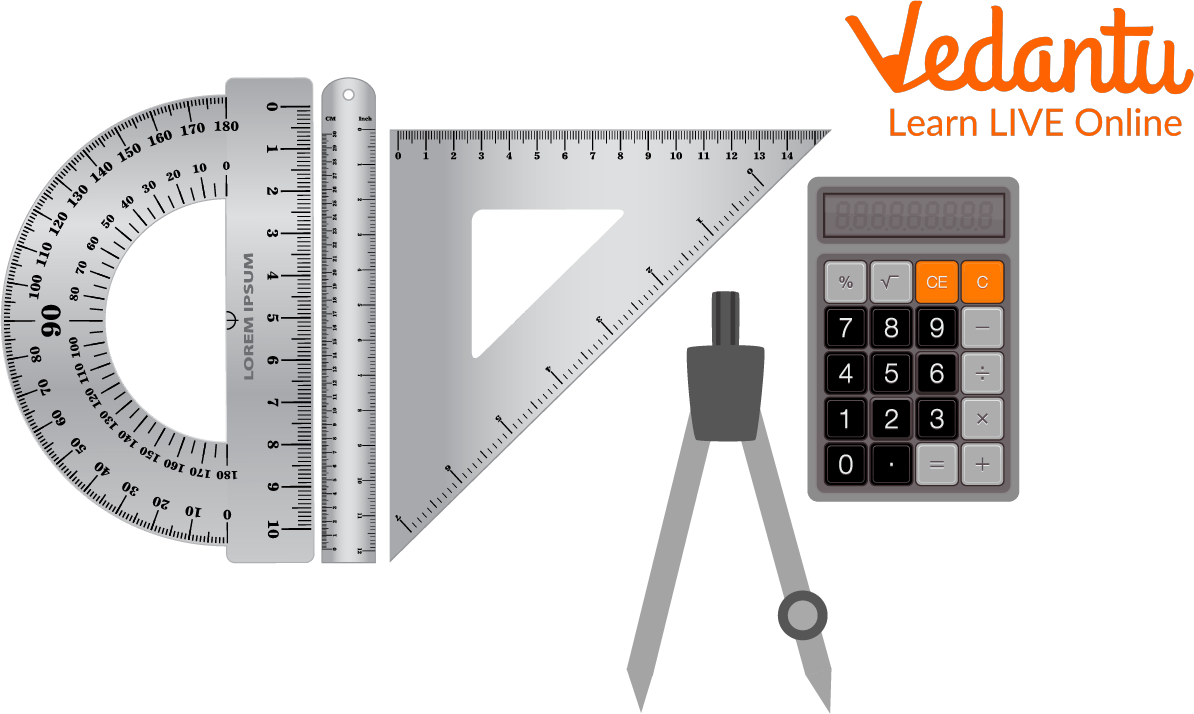




Introduction
Measurement instruments are available in various shapes, sizes, and styles. A sundial was one of the first instruments used to determine the sun's location in the sky before innovators invented clocks to measure the passage of time.

Measuring Instruments
The marine chronometer, created in the 18th century, enabled ship captains to portray longitude to aid in successful sea navigation correctly. Global positioning systems nowadays calculate the length from a GPS satellite to a specific spot on Earth to pinpoint a location anywhere on the planet within a few meters.
Types of Measurement
In numerous fields of mathematics, we deal with certain basic types of measuring variables. They are as follows:
Time
Length
Weight
Volume
Temperature
Measurement Units
We have measurement units for several forms of measurement. We will take a look at the measuring units listed below:
Time units: includes milliseconds, seconds, minutes, hours, days, weeks, months, years, and so on.
Length: is measured in millimetres, centimetres, meters, and kilometres, among other units.
Weight: Weight units for specific objects include grams, kilograms, tonnes, etc.
Volume: is expressed using units such as cm3, m3, litres, and so forth.
Temperature: The most common temperature units are centigrade and Fahrenheit.
10 Measuring Instruments and Their Uses
Measuring equipment are necessary for many situations, including routine medical exams, weighing food, transportation, and regulating the temperature while cooking. Following are the types of measuring instruments and their uses:
Measuring tape: It is used to determine the length of a physical object. It is lightweight and portable, making it easy to transport from one location to another.
Ruler: It is used in various scenarios, such as drawing lines and measuring distances. It is beneficial to the children's school projects.
The pressure gauge is mainly used daily to measure air and water pressure. Hypertension patients use it as a medical device to check their blood pressure.
Thermometer: This device is used to determine the temperature of the body and its surroundings. The digital thermometer offers a faster display than traditional thermometers.
Clock: It is used to measure time and assist you in organising it while performing several jobs.
Speedometer: This device is typically found inside automobile vehicles. A speedometer is used to measure the speed of moving things. It is also utilised for some scientific applications outside of cars.
Chronometer: A chronometer is used to measure the precise time at a known fixed place, particularly for navigation.
Measuring cups are mainly used for measuring food items, and bakers and cooks use them.
A glucometer is a specific medical instrument used to measure blood sugar levels. Diabetic patients use it.
Compass: The architect applies this tool to draw circles. It is also employed to compute the separation between two points on a map. Even the shipbuilding and construction industries can use it.
Summary
The usage of several measuring instrument types in many fields is explained in this article. Before inventors created clocks to track the passage of time, a sundial was one of the earliest tools to locate the sun in the sky. An extraordinary range of devices and tools enables humans to measure almost anything, including calculating travel distances, calculating the length of a board in construction, determining air and water temperatures, analysing wind speed, gauging tire pressure, and measuring the distance around the world.
FAQs on Uses of Measuring Instruments
1. What is the importance of units of measurement?
Most physical quantities require a standard unit to communicate their values. For example, it is challenging to express a certain length to someone without using some unit is difficult.
2. Why is it necessary to use a standardised unit of measurement?
To make our assessment more credible and accurate, we need a standard unit of measurement. Everyone's measurement should be the same for proper trading. A standardised set of measurement units, known as standard units, is required for uniformity.
3. Name some weather instruments that scientists and meteorologists use.
Some weather instruments that scientists and meteorologists use are:
Anemometer: for calculating wind speed
Barometer: to evaluate air pressure
Hygrometer: to determine the rate of humidity
Rain gauge - to calculate precipitation.
4. What is the use of weather balloons?
Weather balloons use radiosondes to determine air pressure, humidity, temperature, wind speed, and direction. They soar to more than 20 miles above the surface, recording and transmitting data back to meteorologists through radio waves.









